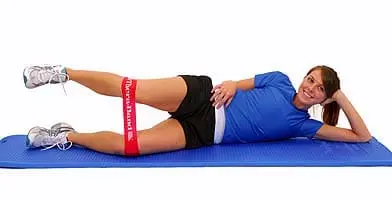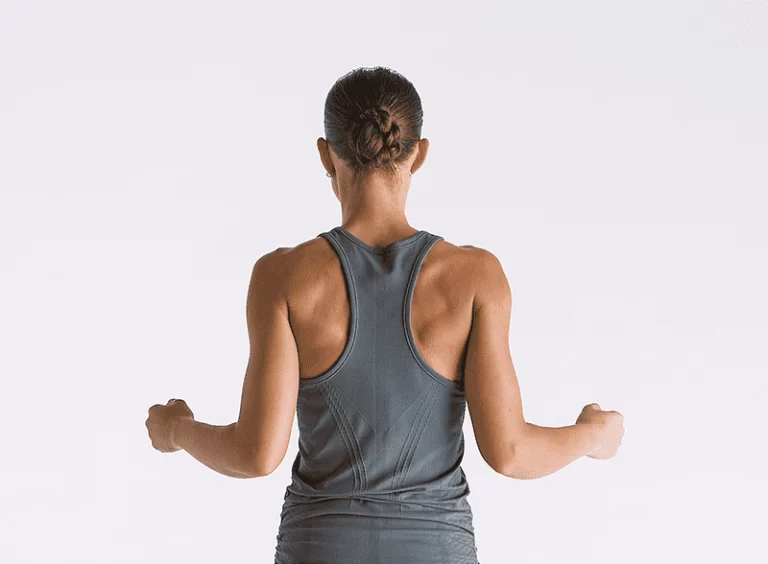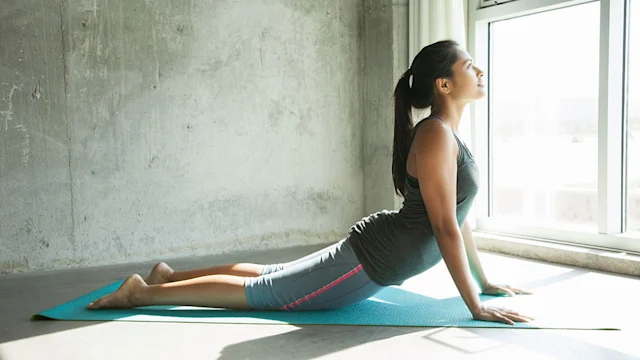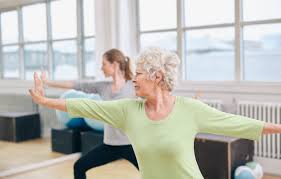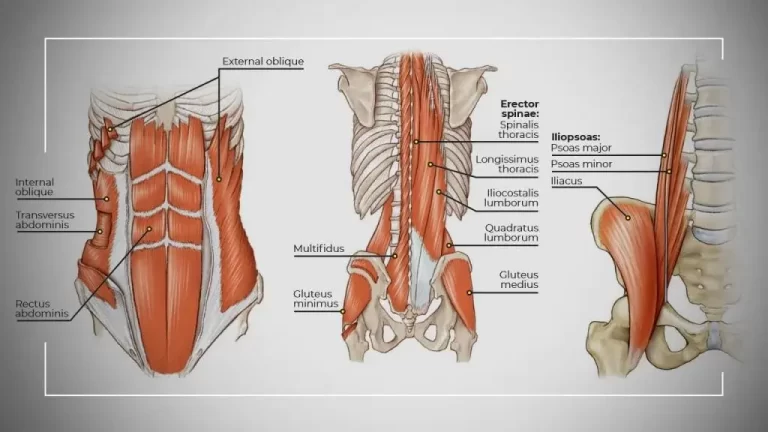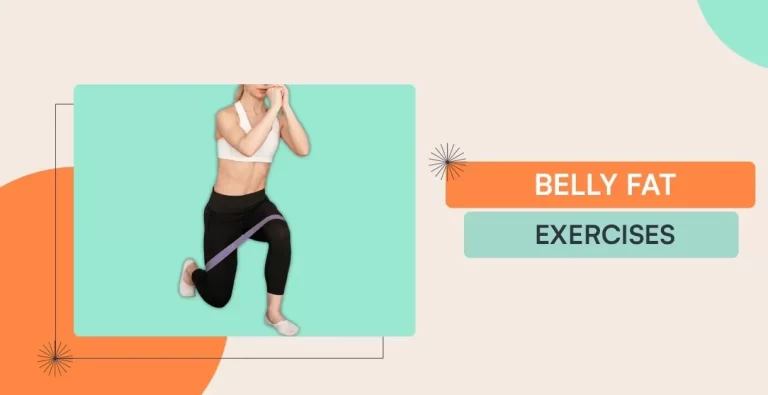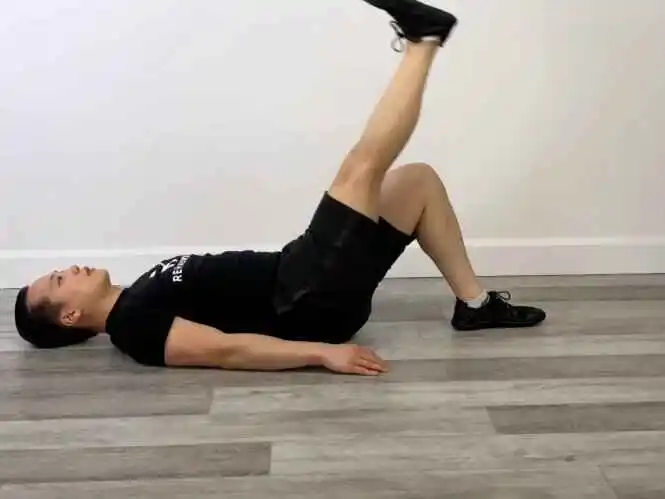14 Best Exercise For Fracture Of The Anterior Superior Iliac Spine
Introduction:
A common injury among teenagers participating in sports, especially those involving sudden, powerful muscular contractions, is an avulsion fracture of the anterior superior iliac spine. The anterior superior iliac spine may sustain a fracture or avulsion due to the strong contraction of the connected muscles during forceful activities like running or kicking. Targeted Exercise, after healing a fracture of the anterior superior iliac spine, regulated movement and rest are usually used for recovery.
This kind of injury is frequently characterised by swelling, tenderness, and a sudden, acute pain near the front of the hip. A physical examination and imaging tests like X-rays or MRI scans, which can show the degree of the fracture and any related soft tissue damage, are usually used to confirm the diagnosis.
Still, the most obvious and popular option for less painful treatment is nonsurgical therapy. Even though conservative treatment is initially recommended, surgery may be necessary depending on the patient’s needs, the extent of fragment displacement, or the severity of the avulsion fracture.
Causes:
The following are the primary reasons for this kind of fracture:
Growth Plate Vulnerability in Teens
Typical of teenage athletes
- The apophyses, or growth plates, are weaker than the muscles that are attached.
- Avulsion risk increases during adolescence because bones expand more quickly than muscles.
- Referred to as apophyseal avulsion fracture or traction apophysitis.
Excessive or Repeated Stress
- Over time, repeated strain on the Anterior Superior Iliac Spine may weaken the bone or the muscle-tendon attachment, which may ultimately result in an avulsion.
Viewed in:
- Long-distance runners
- Dancers
Poor Warm-Up or Unbalanced Muscles
- A poor warm-up increases the risk of fracture by causing a sudden, unplanned contraction.
Pelvic Trauma Directly
An attack or effect on the anterior superior iliac spine, like in:
- An automobile incident
- Sports involving contact, such as rugby hits and football tackles
- Falling onto the pelvic or hip area
Previous Weakness or Injury
- The anterior superior iliac spine may be at risk for reinjury if they have previously suffered a hip or pelvic injury.
- Past strains or muscle imbalances may increase the area’s susceptibility.
Signs and symptoms:
Bruising
- May show up 24–72 hours following an injury.
- Depending on its intensity, it may spread to the groin or thigh.
Acute, Sharp Pain in the Pelvis or Hip Front
- Usually happens when a vigorous movement, like running, kicking, or jumping, takes place.
- “Snapping” or “pulling” feeling
- Localised to the injury location and acute.
Palpable or visible Lump of bone
- When a bone fragment is torn off during an avulsion fracture, it may cause a hump or bulge around the anterior superior iliac spine.
- The sensation might be similar to a knot under your skin.
Tightness or spasms in the muscles
- The thigh and pelvis may experience protective muscular spasms.
- It could feel hard or tight to stretch your quadriceps or sartorius.
Limping or Having Trouble Walking
Pain with carrying weight, particularly when:
- Raise the leg
- The leg is swinging forward.
- Rotating or turning the hip
Tenderness and Swelling Around the ASIS
- Noticeable swelling, bruises, or warmth in the affected area.
- Pressing or contacting the anterior superior iliac spine causes more intense pain.
Decreased Athletic Capabilities
- Pain during warm-ups or workouts suited to a sport.
Deficiency in Hip Flexion
Raising the leg is difficult, particularly when:
- Stair climbing
- Getting into a vehicle
- Kicking or running
Restrictions on Motion
- Under resistance, hip flexion or extension (extending the leg backward) is painful or limited.
- Pain happens when the sartorius is over-stretched, such as when the hip is extended while the knee is flexed.
Advantages of exercise:
Encourages Healing and Blood Flow
- Gentle movement promotes better blood flow, which improves the supply of nutrients and oxygen to the wounded region, supporting the repair of soft tissues and bones.
- Mobilization lowers the risk of problems like deep vein thrombosis (DVT) by preventing blood stasis.
Facilitates the Re-education of Proper Gait
- Walking habits may change as a result of pain and weakness after an anterior superior iliac spine fracture.
- By retraining correct gait mechanics, exercise helps prevent compensations that may result in chronic problems like knee strain or back pain.
Prevents Contractures and Joint Stiffness
- Tight hip flexors and pelvic stabilizers might result from immobilization.
- Contractures are avoided by stretching and mobility exercises, especially in the tensor fascia lata and iliopsoas.
Facilitates Better Neuromuscular Coordination
- The body’s knowledge of position and movement, known as the sensory loop, is disturbed by injury.
- Balance and core stability exercises aid in the restoration of proprioception, which is essential for a safe return to regular activities or sports.
Stop Muscle Atrophy
- Particularly in the quadriceps, hip flexors, and abdominal muscles, immobilization causes muscular atrophy.
- By promoting muscular activity, controlled exercise helps maintain strength and muscle mass while recovering.
Restoration of Range of Motion (ROM)
- Targeted mobility and flexibility exercises improve posture and gait by restoring range of motion, especially in the hip flexors.
Psychological Advantages
- Participating in organized exercise improves confidence and attitude, particularly for athletes who are worried about their performance.
- It lessens movement phobia and anxiety, which may delay healing.
Gets Ready to Get Back into Sports or Activity
- Sport-specific exercises are included in a planned rehabilitation program to get the patient ready to resume full sports participation.
- Improving flexibility, endurance, and resilience via exercise is essential for avoiding further injuries.
lowers the risk of chronic pain
- Ineffective treatment may be the cause of chronic low back, hip, or pelvic pain.
- By restoring muscle function and biomechanics to normal, exercise helps to reduce long-term issues.
Improves Functionality and Strength
- Through gradual loading, physical therapy strengthens the surrounding muscles, including the rectus femoris, iliopsoas, and sartorius.
General Recommendations for Exercise Following an ASIS Fracture:
- Begin slowly; refrain from vigorous stretching or strengthening at first.
- Pay attention to your body: Give up any painful activities.
- Support yourself: In the beginning, crutches or additional help can be required.
- Consult a professional: Your rehabilitation should be overseen by a physical therapist.
Exercise For Fracture Of The Anterior Superior Iliac Spine:
The goal of a hip rotation rehabilitation program is to restore mobility for individuals with this condition. Stretching exercises and hip-strengthening exercises are additional goals.
These are the suggested stretches and exercises that will help your anterior superior iliac spine the most.
Ankle pump
- Sit or lie down and extend your legs.
- Maintain the support and relaxation of your legs.
- When you press the gas pedal, your toes move away from you, an action known as plantar flexion.
- Dorsiflexion, which involves flexing your foot and drawing your toes in towards you, comes next.
- Keep moving in this manner in a constant, flexible rhythm.
- Then return to your neutral position.
- Then relax.
- Repeat these exercises five to ten times.
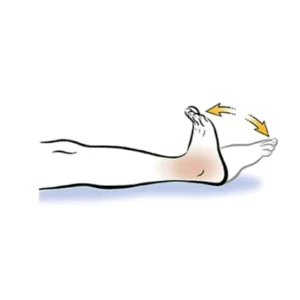
Ankle circle
- Lie down on the bed and extend your leg.
- Maintain your leg off the ground and relaxed.
- At the ankle, carefully rotate your foot in a circle.
- Make 5–10 clockwise circles.
- Afterward, counterclockwise, 5–10.
- Then return to your neutral position.
- Then relax.
- Repeat these exercises five to ten times.
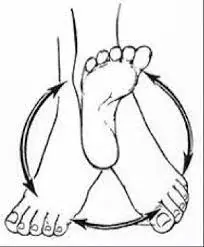
Clamshell
- With your legs together and your knees bent, lie on your left side.
- Squeeze your glutes while activating your side abs.
- Holding your feet together.
- Raise your right knee up slowly.
- Hold this position for a few seconds.
- Afterward, return to the initial position.
- Then return to your neutral position.
- Then relax.
- Repeat these exercises five to ten times.

Thomas test
- The patient’s legs are spread wide while they lie supine (on their back) on an examination table.
- With the help of both hands, the individual firmly pulls one leg toward the chest.
- Having the opposing leg extended, it rests on the table.
- Hold this position for a few seconds.
- Then return to your neutral position.
- Then relax.
- Repeat these exercises five to ten times.
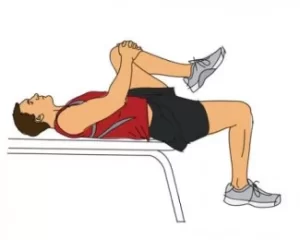
Isometric Glute Squeezes
- Place your feet flat and bend your knees while lying on your back.
- Keep your core lightly engaged and your spine neutral.
- Squeeze or contract your glutes as firmly as possible.
- Hold this position for a few seconds.
- Then return to your neutral position.
- Then relax.
- Repeat these exercises five to ten times.
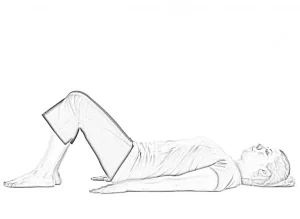
Seated Hamstring Curl
- To begin, sit on a chair facing a steady object that has a band attached to it.
- Wrap the band’s other end over your ankle’s back.
- When the knee bends gently, position the body such that the band is under stress.
- Make sure your knee flexor muscles are engaged before curling the band.
- Hold this position for a few seconds.
- Then return to your neutral position.
- Then relax.
- Repeat these exercises five to ten times.
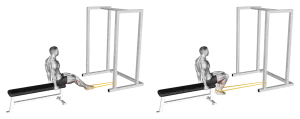
Sidewalk with Band
- Wrap the band around both legs and slightly above each ankle, keeping it flat and not curled.
- Your feet should be shoulder-width apart.
- Instead of being stretched, the band should be tight.
- Put yourself in a half-squat stance with your knees slightly bent.
- With your face forward and your body weight evenly split between both feet, keep your feet in line with your shoulders.
- Take a step sideways with the opposite leg while shifting your weight over the other leg to maintain the half-squat position.
- Make sideways in/out motions with this leg for 5–10 repetitions.
- Throughout the workout, keep your hips level.
- Maintaining a low, forward-facing posture is beneficial when performing this exercise.
- You should have a straight back rather than a rounded one.
- Then return to your neutral position.
- Then relax.
- Repeat these exercises five to ten times.
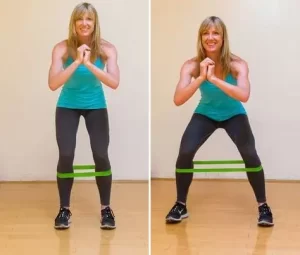
Lying Lateral Leg Raises
- Begin by lying on your side on the floor.
- With your legs outstretched and your feet lined up on top of one another, your body should be in a straight line.
- You can rest your left hand on your leg or hip, or put it out front for additional support.
- Exhale by slowly lifting your left leg off your lower leg.
- Then return to your neutral position.
- Then relax.
- Repeat these exercises five to ten times.
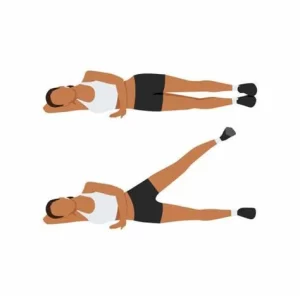
Step Up
- Start with a standing position on the floor.
- Next, position a step box or lower platform in front of you.
- On the step, place the foot that is damaged, such as the right foot if the right ASIS is fractured.
- To raise your body and straighten your hips and knees, push through your heel.
- Use muscle control instead of force.
- Elevate the uninjured foot to the step.
- Step back down slowly, starting with the uninjured foot and working your way down to the affected one.
- Then return to your neutral position.
- Then relax.
- Repeat these exercises five to ten times.
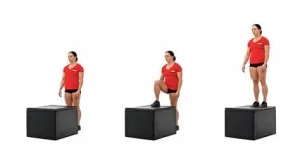
Clamshell Exercise With A Resistance Band
- The band should be placed on both legs above the knees.
- With your knees at a 45-degree angle, position your legs and hips on one side.
- Your core may be stabilized by contracting your abdominal muscles.
- Lift your top knee to the maximum height possible.
- Hold this position for a few seconds.
- Then return to your neutral position.
- Then relax.
- Repeat these exercises five to ten times.
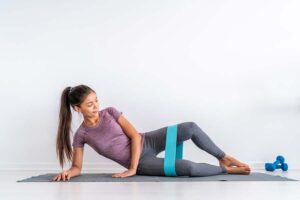
Hip Flexor Stretch
- Begin by You should have your left foot flat in front of you and your right knee on the floor behind you.
- Maintain a tall trunk throughout this workout.
- You should feel a slight stretch in the front of your hip after carefully extending your right knee back.
- Using your right glute as if you were pushing forward, compress your hips and trunk to get them closer to your left foot.
- To create a pelvic tilt, slightly tuck your hips.
- Hold this position for a few seconds.
- Then return to your neutral position.
- Then relax.
- Repeat these exercises five to ten times.
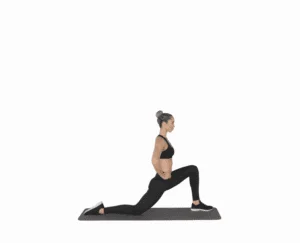
Bridging
- Take a comfortable position on your back.
- Doing this on a yoga mat or another soft surface could be a good idea.
- Maintain a bent knee position.
- On the floor, keep your feet flat.
- Your hips should rise off the floor as you push through your feet.
- At the peak of the action, squeeze your butt muscles.
- Hold this position for a few seconds.
- Then return to your neutral position.
- Then relax.
- Repeat these exercises five to ten times.
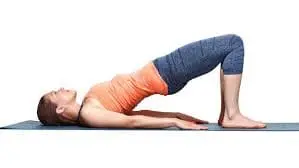
Hip extensions
- Stand with your legs shoulder-width apart.
- Use a table or chair in front of you as support.
- Squeeze the muscles in your abdomen.
- Maintain a straight knee and pointed toes.
- Afterward, slowly kick your leg back.
- Hold this position for a few seconds.
- Throughout the workout, make sure your back and upper body remain straight.
- Then return to your neutral position.
- Then relax.
- Repeat these exercises five to ten times.
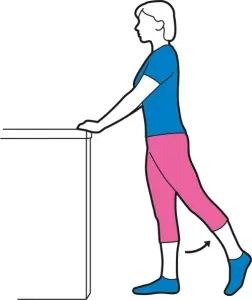
Dead bug
- The proper core engagement should come first.
- Lying down on the floor, bend your legs and raise your arms straight up over your body.
- Inhale, then contract your abs to force your back into the floor, leaving no space between breaths.
- Ensure that your legs are at a straight angle to the ground.
- As soon as your back stops touching the floor, only extend as far as you can.
- Hold this position for a few seconds.
- Then return to your neutral position.
- Then relax.
- Repeat these exercises five to ten times.
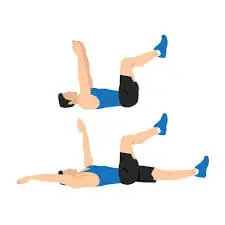
Which safety precautions should be taken during exercise?
To guarantee safety and the best possible recovery, exercise following an anterior superior iliac spine (ASIS) fracture must be done gradually and under close supervision.
The following are comprehensive workout recommendations and safety precautions for treating anterior superior iliac spine (ASIS) fractures:
Medical Approval
- A physical therapist or orthopaedic professional should always be consulted before beginning any workouts.
- Verify bone repair with imaging (CT scan or X-ray), typically 4–6 weeks later.
Weight-Bearing Development
- Stay in the weight-bearing condition that is prescribed (non-weight bearing → partial, → full).
- During the early stages, use mobility devices or crutches as instructed.
Stay away from painful movements.
- Exercise should be stopped if it results in pelvic or groin pain that is severe, tugging, or persistent.
- Avoid doing excessive thigh or hip flexor stretches in the beginning.
Tracking Pain
- Exercises ought to be either painless or very slightly painful.
- If you experience more pain while or after exercising, stop right away and see your doctor.
Make progress gradually.
- Gradually increase range of motion, resistance, and repetitions.
- Wait until the latter stages of rehabilitation and under expert supervision before starting running, jumping, or sport-specific exercises.
Safe Positioning
- Avoid hip hyperextension or sudden stretching of the sartorius or the tensor fascia lata (TFL) during early recovery.
Warming Up and Cooling Off
- Always start with a quick (5–10 minutes) warm-up, such as walking or stationary cycling.
- To prevent stiffness, finish with a moderate stretch and cool-down.
Follow a Structured Rehab Plan
In collaboration with a physical therapist,
- Adjust the training regimen to your current state of recovery.
- Include strength, flexibility, balance, mobility, and functional training in that order.
When did you stop exercising?
Stop working out and see a doctor if you have any of the following symptoms:
Sudden or Severe Pain
- In close proximity to the front of the pelvis or groin, known as the anterior superior iliac spine (ASIS).
- Pain that worsens during or after exercise.
Inflammation, bruising, or swelling
- Swelling around the hip or pelvis, either new or worse.
Decreased Strength or Mobility
- If your range of motion decreases instead of increases.
- If you suddenly experience pelvic or leg weakness.
Burning, tingling, or numbness
- There may be indications of nerve involvement, namely in the front or inner thigh (e.g., femoral or lateral femoral cutaneous nerve irritation).
Having trouble bearing weight or walking
- If, after improving, walking hurts or you start to limp once more.
Symptoms of Overuse or Fatigue
- Pain that doesn’t go away 24 to 48 hours after doing out.
- Feeling too tired to perform rehabilitation exercises or simple movements.
The sensation of snapping or popping
- An indication of possible stress or re-injury to the muscle or bone.
Loss of Strength or Function
Exercise should be discontinued if you suddenly:
- You can no longer lift your leg by yourself.
- After some exercise, I began limping.
- A movement that was simple earlier in rehab is now impossible to perform.
Summary:
It takes time and perseverance to recover from a fracture of the anterior superior iliac spine. Most people restore full function and resume their regular sports or activities with the right help. Throughout your rehabilitation process, constantly stick to a graded exercise progression and maintain regular contact with your physical therapist or healthcare practitioner.
Avulsion fractures of the anterior iliac spine are common acute injuries in children and young adults who play sports. The cause of these injuries is traumatic apophyseal avulsions, which primarily affect the anterior superior iliac spine. It is essential to identify these injuries to prevent unnecessary and expensive follow-up investigations. The diagnosis is greatly affected by the patient’s medical history.
Preventing these kinds of fractures requires early and considerate evaluation and treatment of growth plate damage. Conservative therapy is still the best option because it allows for a return to sports without any adverse effects.
FAQ:
What is the anterior inferior iliac spine?
One of the front thigh’s quadriceps muscles, the rectus femoris, joins to the Anterior Inferior Iliac Spine (AIIS), a section of bone situated just above the hip joint.
What is the duration of recuperation after avulsion fracture surgery?
Most of the healing takes place four to six weeks after the fracture. Any additional pains or problems are normal. This often happens when you try to do something you haven’t done in a long time. After the injury, it’s also common for the area to continue to be more sensitive for a few months.
Is it possible for someone with an avulsion fracture to exercise?
Early movement and exercise:
You must perform the following exercises without experiencing too much pain. This may prevent your foot and ankle from becoming too stiff. The healing process is increased by early weight bearing, or putting weight through the damaged foot.
Should you have physical therapy after an avulsion fracture?
Physical rehabilitation is essential for early weight bearing and return to play following avulsion injuries. The first goal following an avulsion fracture is to minimise pain and swelling. This requires the application of ice, compression, and adequate rest for the bone to mend.
What are some ways to prevent avulsion fractures?
Stretch and warm up before playing any sport.
Stay away from overdoing it in any sport.
Avoid making sudden motions (such as twisting or shifting directions).
Take part in exercises that will strengthen and develop your pelvic muscles.
What is a simple workout regimen for anterior superior iliac spine fractures that may be done at home?
Clamshell Exercise With A Resistance Band
Hip flexor stretch
Stepping Up
Hip extensions
Lying lateral leg raise
When should a person who has suffered a fracture to their anterior superior iliac spine start exercising?
Every day, you can spend at least thirty to forty minutes exercising.
Gradually stretching and working out will benefit you.
Is it possible for an avulsion fracture to heal without surgery?
Avulsion fractures are usually treated with rest, ice, and closely monitored exercise programs designed to increase range of motion, strengthen muscles, and encourage bone healing.
What factors increase the likelihood of avulsion fractures?
They are more common in young athletes whose bones are still developing. Children may be more prone to these fractures if they play or practise too hard, too often, or with improper skills.
What should you not do in the event of an anterior superior iliac spinal fracture?
You should avoid physically demanding activities like sports and exercise to allow the bone to recover. However, this doesn’t mean that you should wait for the fracture to heal before taking any action.
Can someone with an ASIS fracture walk?
The severity affects this. Crutches could be suggested early on to prevent weight-bearing.
Do ASIS fractures require surgery?
Surgery may be necessary for severe or dislocated ASIS fractures, but most heal without it.
References:
- Professional. Avulsion Fracture, C. C. M. n.d. Cleveland Clinic. In-Text Citation: (Professional, n.d.) https://my.clevelandclinic.org/health/diseases/21802-avulsion-fracture
- Anterior superior iliac spine avulsion fracture in 2023 “Bariya”
- Avulsion of the Anterior Superior Iliac Spine (ASIS), Knee & Sports, Orthobullets, and Souder
- Safran, Zachazewski, and Stone (2012) reported an avulsion fracture of the anterior superior iliac spine.
- Causes of iliac crest discomfort and pain-relieving exercises for 2025 – Editorial Contributor for WebMD
- Lower limb surgery for an avulsion fracture and the SUP iliac spine
- In 2013, Naylor, Goffar, and Chugg suffered an avulsion fracture of the anterior superior iliac spine.

